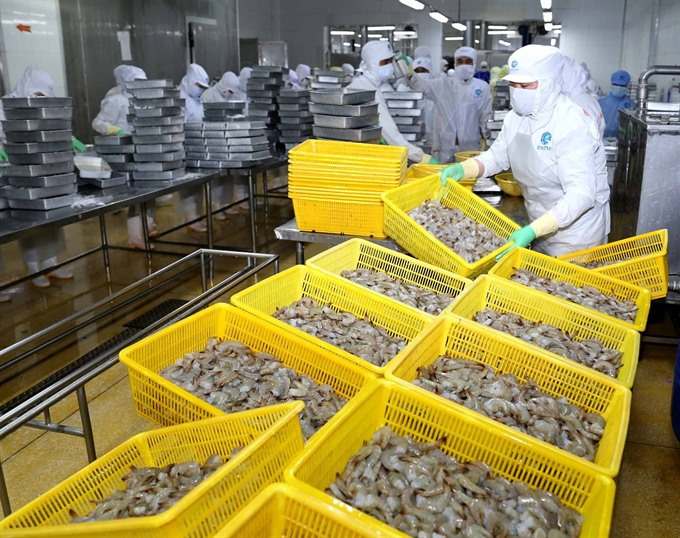Viet Nam’s shrimp industry will become a key economic sector, if the national action plan for the development of the shrimp industry by 2025 that was approved by the Prime Minister meets its targets.

Viet Nam’s shrimp industry will become a key economic sector with sustainable development that is environmentally friendly and can withstand the challenges of climate change, if the national action plan for the development of the shrimp industry by 2025 that was approved by the Prime Minister meets its targets.
The plan hopes to improve the quality, efficiency of production and competitiveness of Vietnamese shrimp products, in a bid to benefit farmers, businesses and the country’s economy.
According to the action plan, the domestic shrimp industry is expected to gain US$5.5 billion in export value and record an annual average growth of 10.79 per cent in 2017-20, including $4.5 billion from brackish water shrimp exports.
The total area rearing brackish water shrimp is estimated to reach 710,000ha, with total output of 850,000 tonnes of shrimp during 2017-20, and expand to 750,000ha and 1.1 million tonnes of output in the period from 2020-25.
Meanwhile during the period of 2017-20, the industry will have a total area of 30,000ha rearing giant freshwater prawn with total output of 30,000 tonnes and one million cubic metres of cage rearing lobster with total output of 2,500 tonnes.
In 2021-25, a hi-tech shrimp industry and large-scale eco-shrimp farming area will be developed. Infrastructure and technical services will be invested in a synchronous, efficient and sustainable manner. The shrimp industry expects to reach $10 billion in export value and an average growth of 12-14 per cent per year.
Direction
According to the plan, the agriculture must take full advantage of natural conditions, market, processing technology and experts’ experience to gain efficient and sustainable development for the local shrimp industry.
At the same time, the industry will develop large-scale production and use hi-tech and environmentally friendly scientific achievements to increase productivity and quality. The production will be gradually phase out the use of chemicals and antibiotics in processing and circulation of shrimp products.
Development of production must follow closely with the demand of the consumption market. The plan aims to build the brands of shrimp products in Viet Nam.
The Viet Nam Association of Seafood Exporters and Producers (VASEP) said shrimp exports contributed the most to the total national seafood export value, with a growth rate of 21 per cent to $3.8 billion in export value for 2017. — VNS





